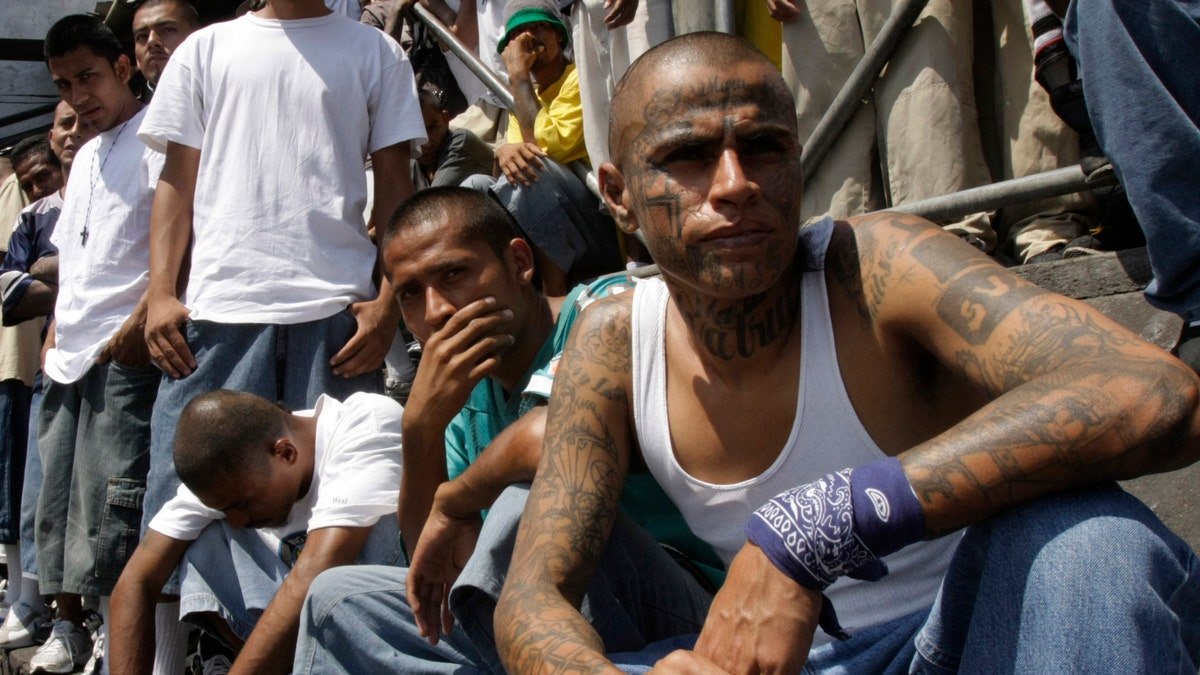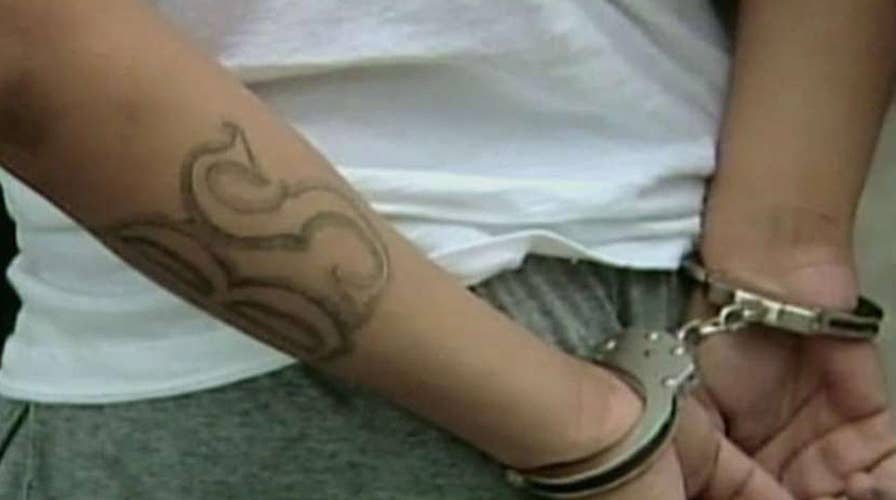Several MS-13 members arrested in Ohio in major bust
US Attorney Glassman talks about the brutal gang
Even as the feds crack down on MS-13 by taking scores of members off U.S. streets, another government agency could be helping the infamous gang replenish its ranks, federal records show.
The Office of Refugee Resettlement in the 2017 fiscal year placed more than 40,000 unaccompanied Central American teenagers around the country, and while most are likely not criminals, some most certainly are. Even youth who come with the best intentions can wind up targeted by the murderous street gang, say experts.
“In their relentless effort to expand gang membership and gain traction within our communities, they aggressively target our children in school,” Acting Immigration and Customs Enforcement Director Tom Homan said at a recent press conference..
Of 214 MS-13 members rounded up by law enforcement in the past few weeks, officials say at least a third of the suspects would have been classified as UACs (unaccompanied alien children). Meanwhile, the Office of Refugee Resettlement in the Department of Health and Human Services continues to place children, some with existing gang ties, some vulnerable to recruitment and still others to victimization, as was the case in an April quadruple homicide in Central Islip, New York, that has been tied to the gang.
“In their relentless effort to expand gang membership and gain traction within our communities, they aggressively target our children in school.”
According to the resettlement office website, 42,416 UACs were placed in the 2017 fiscal year, a drop from the previous year's 59,170 but higher than FY 2015’s 33,726. Strikingly, in one area especially hard hit by MS-13 gang violence, the New York suburban counties of Nassau and Suffolk, there's been little respite in placements.
Suffolk saw 1,045 UACs and Nassau 746 in the 2017 fiscal year. This, against the backdrop of suspected gang-related developments including the recent discovery of human remains in Freeport, Nassau County, and that April quadruple homicide. In 2016, Suffolk saw 1,472 children placed and Nassau 1,219.
The downturn in placement numbers may appear promising to some observers. But for Brentwood High School, which has seen its share of MS-13 violence, including a double homicide in September 2016 that led to the arrest of several gang members, the infusion of UACs has intensified. According to a school official, 778 students who would be considered UACs registered for this school year. This is a significant increase over the 556 new registrations last year.
Homan said UACs are particularly vulnerable to MS-13 recruitment in the United States because of their lack of family and community ties. He added that "schools have become ground zero for MS-13 recruitment. Children may face retribution from the gang for refusing to join.”

The gang seeks new recruits from the ranks of unaccompanied minors (Associated Press)
The result? “They quickly transform into the lethal MS-13 gang members that they once feared,” Homan said.
According to one law enforcement official, 22 percent of MS-13 arrests over last three years were UACs. UAC victims are not tracked since it is not policy to check the immigration status of victims or witnesses.
On May 23, Sen. Ron Johnson, R-Wis., contacted Scott Lloyd, director of the Office of Refugee Resettlement, looking for answers regarding surreptitious placement of known gang members, vetting of UACs and placement policies.
Lloyd said in his letter to Johnson that during a June 9 review of 138 UACs in their facilities, 35 were found to be gang members and four were forced into gang involvement. He didn’t specify whether or where the these 39 were placed.
“ORR considers if the UAC has reported gang involvement, displays gang affiliation, or has self-disclosed gang involvement,” Lloyd wrote.
“As part of the Community Safety Initiative, ORR has reached out to DHS to enhance information sharing between DHS and ORR regarding potential gang affiliation of UAC or their sponsors,” wrote Lloyd.
Many in law enforcement have questioned the diligence and timeliness of this information sharing, and with a recent surge of UACs crossing the Big Bend sector of Texas, the concerns remain.

